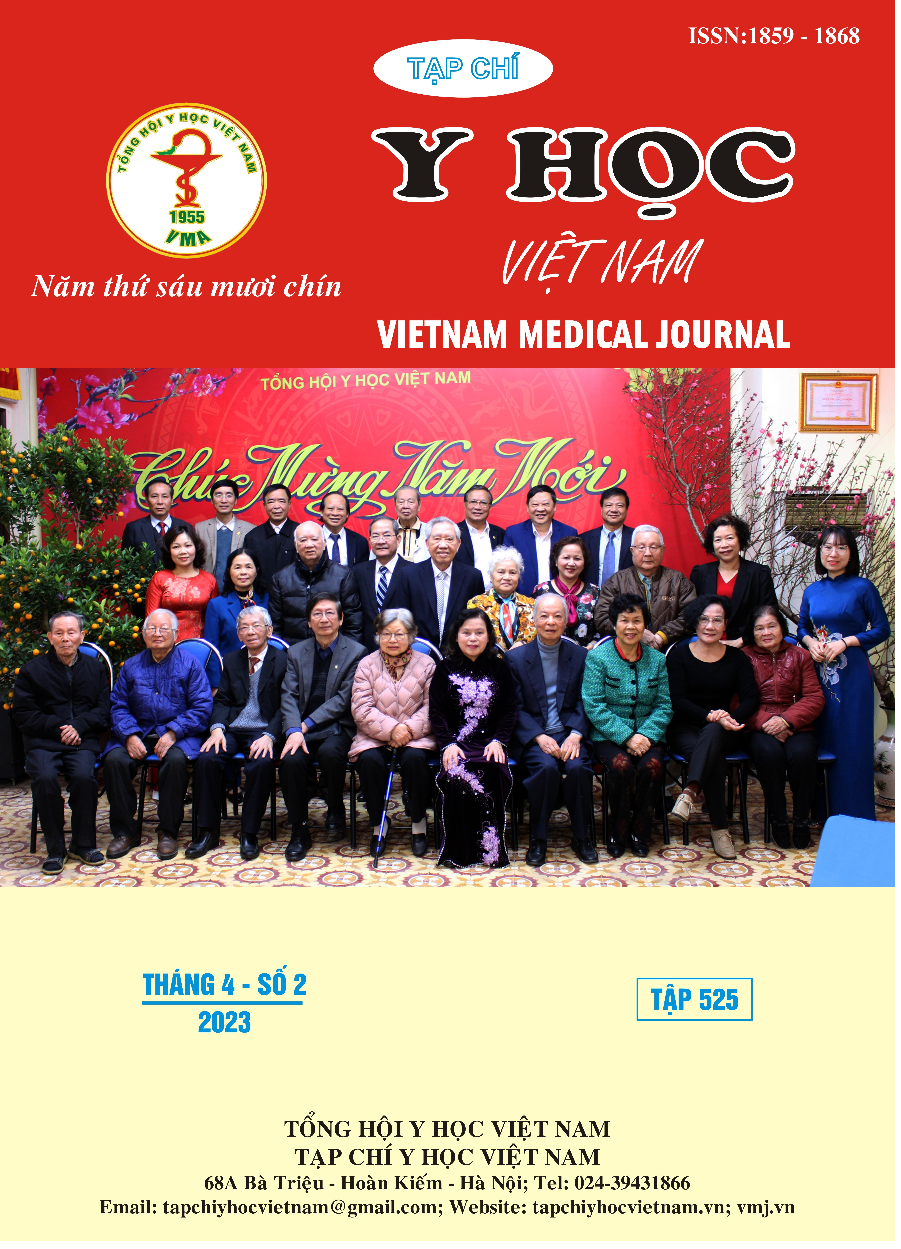ASSOCIATION BETWEEN METABOLIC SYNDROME AND OSTEOPOROSIS IN THE ELDERLY
Main Article Content
Abstract
Objectives: To investigate the association osteoporosis and metabolic syndrome in the elderly. Methods: This cross-sectional, descriptive study was carried out on 239 elderly patients (≥ 60 years old) at Rheumatology and Geriatrics clinics of University Medical Center Ho Chi Minh City from November 2020 to May 2021. The patients were recorded demographic information, clinical symptoms, clinical examination, blood test results and measuring bone mineral density assessed by dual-energy X-ray absorptiometry. Results: Among 239 elderly patients enrolled the study, we had 94 patients with osteoporosis (39.3%) and 145 patients without osteoporosis (60.7%). In addition, the study also recorded 178 women (77.5%) and 61 men (22.5%.). The rate of osteoporosis in metabolic syndrome group was was higher than that non-metabolic syndrome group (51 .7% compare to 39.4%), and statistically significant different with p < 0.05. In which, the rate of osteoporosis in women with metabolic syndrome is higher than the group non-metabolic syndrome (52.9% versus 36.8%) and statistically significant different with p=0.033. Women patient with metabolic syndrome increased the odds ratio for osteoporosis by 2,8 times, which was statistically significant (OR = 2.8; p = 0.029). In men, our study recorded the rate of osteoporosis in the group metabolic syndrome and the group non-metabolic syndrome was 18.8% and 20%, respectively, the difference was not statistically significant with p=0.914. Conclusion: The prevalence of osteoporosis in the elderly with metabolic syndrome was 51.7%. Women patient with metabolic syndrome increased the odds ratio for osteoporosis by 2,8 times, which was statistically significant (OR = 2.8; p = 0.029). The study did not find this association in men (OR= 0.87; p = 0.894).
Article Details
Keywords
Osteoporosis, metabolic syndrome
References
2. Chen D. Z., Xu Q. M., Wu X. X., et al. (2018), "The Combined Effect of Nonalcoholic Fatty Liver Disease and Metabolic Syndrome on Osteoporosis in Postmenopausal Females in Eastern China". Int J Endocrinol, 2018, pp. 2314769
3. Chin K. Y., Chan C. Y., Subramaniam S., et al. (2020), "Positive association between metabolic syndrome and bone mineral density among Malaysians". Int J Med Sci, 17 (16), pp. 2585-2593.
4. Eckstein N, Buchmann N, Demuth I, Steinhagen-Thiessen E, Nikolov J, Spira D, et al. Association between Metabolic Syndrome and Bone Mineral Density--Data from the Berlin Aging Study II (BASE-II). Gerontology. 2016;62(3):337-44
5. El Maghraoui A, Rezqi A, El Mrahi S, et al. Osteoporosis, vertebral fractures and metabolic syndrome in postmenopausal women. BMC Endocr Disord 2014;14:93.
6. Muka T., Trajanoska K., Kiefte-de Jong J. C., et al. (2015), "The Association between Metabolic Syndrome, Bone Mineral Density, Hip Bone Geometry and Fracture Risk: The Rotterdam Study". PLoS One, 10 (6), pp. e0129116.
7. Qin L, Yang Z, Zhang WW, et al. Metabolic syndrome and osteoporotic fracture: a population-based study in China. BMC Endocr Disord 2016;16:27
8. Wongdee K, Charoenphandhu N. Update on type 2 diabetes-related osteoporosis. World J Diabetes 2015;6:673–8


